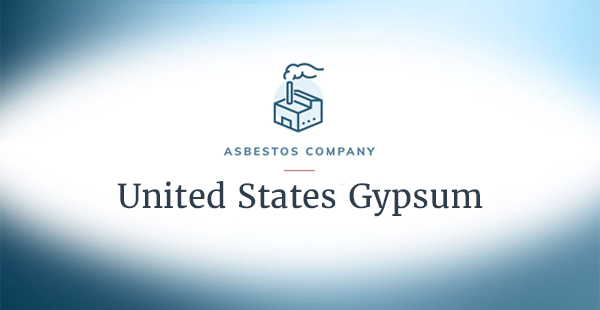U.S. Gypsum Company History of Asbestos Use
In 1902, 30 independent rock and plaster companies merged to form the United States Gypsum Company (U.S. Gypsum or USG). This merger gave the new company access to the formerly independent resources and local markets of all 30 companies. From 1920 to 1978, some of the company’s products contained asbestos.
In 1903, USG developed its first building product. Before that, USG had mined and prepared gypsum for other companies to use. The company continued to expand its offerings and purchased Sackett Plaster Board Company in 1909. This marked USG’s entry into plaster and gypsum board products, which we know as drywall today.
Beginning in 1920, USG started manufacturing and selling various asbestos-containing products, such as its drywall. It expanded its product line throughout the decade.
Legal records indicate USG studied the effects of asbestos starting in the 1930s. In 1936, it and other companies funded tests that indicated asbestos could cause cancer in mice.
USG stopped using asbestos in its products in 1978. Still, former employees and consumers started filing asbestos claims against the company. USG faced millions of dollars’ worth of asbestos claims and declared bankruptcy in 2001.
USG reorganized, repaid shareholders and lenders in full, and emerged from bankruptcy in 2006. Part of the reorganization plan included the creation of a nearly $4 billion asbestos trust to handle current and future asbestos claims.
Resources for Mesothelioma Patients
U.S. Gypsum Company Asbestos Trust Fund
USG filed for bankruptcy in 2001. In just the first half of that year, the company was named in more than 22,000 new asbestos and mesothelioma claims.
In 2006, the United States Gypsum Asbestos Personal Injury Settlement Trust was created during bankruptcy proceedings. It was initially funded with $3.9 billion to handle current and future claims.
Most Recent Information From United States Gypsum Asbestos Personal Injury Settlement Trust
The trust’s year-end 2024 report revealed, as of December 31, 2024:
- Over 20,800 United States Gypsum Asbestos Personal Injury Settlement Trust claims were paid.
- Over 28,200 unliquidated claims were received by the trust.
- Approximately $80.75 million was paid to asbestos victims by the United States Gypsum asbestos trust.
- Approximately $820.4 million in total assets remain in the trust.
- Over $175,000 was reported in settled but unpaid claims.
- The trust has received over 774,300 unliquidated claims since it was established.
- Over 406,600 United States Gypsum claims have been paid since the trust was established.
- More than $4.11 billion in settlement of unliquidated claims has been paid to asbestos victims since the date the trust was established.
Current United States Gypsum Asbestos Personal Injury Settlement Trust Payment Percentage
The current payment percentage is 11% for the United States Gypsum Asbestos Personal Injury Settlement Trust. At a payment percentage of 11%, the current payout on a United States Gypsum Expedited Review claim for mesothelioma is $17,050.
Determining Review Process When Filing a United States Gypsum Asbestos Personal Injury Settlement Trust Claim
An experienced asbestos attorney will review the injured party’s information to determine the appropriate review process for filing an United States Gypsum asbestos trust claim. A sample of United States Gypsum (USG) claims filed between 2022 and 2024 indicated that 100% of claims were filed under the Individual review (IR) process and 0% of claims were filed under the Expedited Review (ER) process.
- Expedited Review Process: United States Gypsum claims filed under the ER process will have a streamlined review from the trust based on the medical and exposure requirements outlined in the Trust Distribution Procedures. These claims will receive the standard scheduled value based on the diagnosed disease level.
- Individual Review Process: It is recommended to file all USG claims under the IR process for potential higher compensation than the standard scheduled value. USG claims submitted under the IR process undergo a thorough evaluation of exposure, medical, and personal records to determine the individual liquidated value. IR filing is required for certain lung cancer cases, secondary exposure, or if trust criteria isn’t met.
The trust is still accepting claims today to compensate victims of asbestos exposure. Payments may vary depending on the injured party’s diagnosis, age, exposure history, and the law firm’s settlement history. If you or a loved one believe you are entitled to compensation, learn how a mesothelioma lawyer can help.
U.S. Gypsum Company Asbestos Products
USG used asbestos in some of its products from 1920 to 1978. Asbestos provided products with durability and fire-proofing qualities. These properties made the harmful mineral seem like a valuable addition to construction products.
USG originally produced plaster and Sheetrock. After World War I, the company expanded its offerings to include other construction materials. USG’s other asbestos products included Durabond joint compound, Perf-A-Tape and Red Top Structo-Lite.
USG became a leading supplier of asbestos materials in the post-World War II housing boom. It also entered the commercial building industry, supplying products for residential and commercial needs.
U.S. Gypsum Company and Occupational Exposure
USG asbestos products exposed thousands of people to the dangerous mineral. One of the largest sources was occupational exposure. USG employees and workers who used the company’s products were most at risk of asbestos exposure.
In the early 1930s, USG funded testing to explore the effects and hazards of industrial dust, including asbestos. Through these studies, company officials learned about the dangers of asbestos cancer in the 1930s and 1940s. But the company did not disclose this information to its workers. USG also engaged in many marketing campaigns insisting on the safety of asbestos.
After many years of asbestos use by the company, USG workers began developing asbestos diseases like mesothelioma. Many workers blamed these illnesses on occupational exposure from their time at USG.
Occupational asbestos exposure extended beyond USG’s direct employees, also affecting those who frequently used the company’s products. For example, drywall workers faced exposure risks as they handled, cut, sanded and installed the company’s asbestos-containing drywall materials. These activities released asbestos-containing dust into the air, where it could be inhaled.
Many people came into contact with the asbestos in USG products, not just workers. For instance, many homeowners may have performed renovations or repairs using USG products that contained asbestos. Once asbestos dust is airborne, it can lead to exposure for those in the area.
Workers may also accidentally carry fibers to a second location. Anyone who used USG asbestos products at work could unknowingly bring home fibers on their clothing and belongings. This may lead to secondary exposure for their family members. People who develop an asbestos disease from secondary exposure may be eligible to file claims for compensation.
Asbestos Litigation Against U.S. Gypsum Company
USG’s asbestos use led to over 250,000 asbestos lawsuits between 1994 and 2001. This significantly impacted the company’s finances, with litigation costs exceeding $450 million.
The company faced personal injury lawsuits filed by people who developed asbestos-related diseases. Lawsuits may result in asbestos compensation for the injured parties. Other types of lawsuits were also filed against USG.
For example, in 1984, the city of Baltimore named USG and several other asbestos companies in a product liability lawsuit. The city sought compensation for the “cost of discovering, managing, rectifying the effects of, and removing asbestos-containing surface treatment products.”
The jury awarded the city of Baltimore more than $8 million in compensatory damages against USG. Compensatory damages are meant to repay plaintiffs for the costs of the defendant’s wrongdoings.
In 2001, USG declared Chapter 11 bankruptcy because of asbestos litigation costs. A trust fund was created several years later to handle related claims.
Common Questions About U.S. Gypsum Company
- When did U.S. Gypsum Company stop using asbestos?
U.S. Gypsum stopped its asbestos use in 1978. It had used asbestos in some products since 1920. Company records indicate that not all, but many, of its products contained the mineral. Asbestos is a dangerous and carcinogenic material.
- What percentage does the U.S. Gypsum Company asbestos trust pay?
As of November 2024, the USG Asbestos Personal Injury Trust had a payment percentage of 11%. It will continue to be reviewed often to make sure the fund has enough money to continue paying claims.
- When was asbestos banned in drywall?
In 1977, the U.S. Consumer Product Safety Commission (CPSC) issued a partial asbestos drywall ban. It banned joint compounds and drywall tape. In 1989, the Environmental Protection Agency (EPA) tried to issue a more complete ban, but it was quickly overturned. Currently, asbestos is not banned in drywall in the United States.
- Who owns U.S. Gypsum Company?
U.S. Gypsum is owned by Knauf, a German construction product company. Knauf acquired USG in 2019. USG remains headquartered in Chicago, Illinois.









